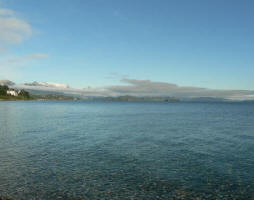 Thomson Reuters Reports Move of Tech Trends to Food & Water
Thomson Reuters Reports Move of Tech Trends to Food & Water
A new report shows that our passion for cutting-edge technology may be (slightly) waning—and innovators are pivoting to areas where they can truly make an impact
The past decade has yielded revolutionary innovations across the globe. But a new report from Thomson Reuters suggests that the era of unprecedented invention may be in for a slowdown.
According to the company’s annual State of Innovation report, the global rate of publishing scientific literature has fallen to under 250,000 papers across 12 key industries in 2014. That's down from 300,000 in 2013 and a peak of 350,000 just before the 2008 global economic crisis.
By contrast, the volume of global patents—another key measure of innovation, according to Reuters—increased by 3.3 percent between 2013 and 2014, encompassing some 2.15 million patentable inventions. But Thomson Reuters intellectual property analyst Bob Stembridge told the Wall Street Journal that this number belies a slowdown in growth: In 2012, that rate was 20 percent; in 2013, 17.7 percent. There were more inventions than last year, but the rate of growth is slowing down.
So are we headed into a new era of entrepreneurial obsolescence? Not necessarily: The Thomson Reuters innovation report suggests that we’re facing a pivot in how key companies across essential industries allocated their R&D resources.
This becomes clear when you look at innovation volume across 12 key industries. Despite consumers’ perennial love of cutting-edge information and telecommunications technologies that have traditionally dominated the sheer volume of patent and research (comprising 30 percent and 13 percent of all innovation in 2014, respectively), other hyper-specific fields have seen rapid progress.
Food and beverage fermentation (21 percent change), cosmetics and well-being (eight percent change), biotechnology (seven percent change), and pharmaceuticals (12 percent change) all showed significant growth between 2013 and 2014. Global innovators, it seems, are turning their attention to the technologies that connect the world, and the life sciences that could change the lives of those living in it.
This is a good thing. Innovations in information technology and telecommunications in the past decade have yielded inventions for both consumers (the smartphone) and businesses (cloud computing and other forms of data management). But a renewed focus on the life sciences is, frankly, a more morally appropriate allocation of resources, especially given the crises the world faces in the coming years.
Consider this: There are some 800 million undernourished people in the world today, according to the United Nations. In addition, some 1.2 billion people live in areas of physical water scarcity, while another 1.6 billion people simply don’t have the infrastructure to drink safe water. The World Economic Forum says that water and food scarcity are the biggest risks facing the global community, and are at the root of a range of global health problems—malnutrition, disease, poverty, and regional violence not least among them. The world doesn’t need another Snapchat. (And no, you’re not morally inferior to anyone because you care about Snapchat.) The world needs healthier, sustainable, scalable ways of surviving. Increasing investments in the life sciences is an important step toward that goal.
If the businesses and academic institutions that make up the bulk of research and innovation around the world opt to devote a sliver of their resources to tackling these pressing issues, it’s good for the entire global community—which, one would hope, is good for business.
| Contact information | n/a |
|---|---|
| News type | Inbrief |
| File link |
http://www.psmag.com/business-economics/on-the-global-innovation-slowdown |
| Source of information | The Water Network / Pacific Standard |
| Keyword(s) | Drinking Water, Technology, Water Supply |
| Subject(s) | ANALYSIS AND TESTS , CHARACTERISTICAL PARAMETERS OF WATERS AND SLUDGES , DRINKING WATER , DRINKING WATER AND SANITATION : COMMON PROCESSES OF PURIFICATION AND TREATMENT , ENERGY , FINANCE-ECONOMY , HEALTH - HYGIENE - PATHOGENIC MICROORGANISM , HYDRAULICS - HYDROLOGY , INDUSTRY , INFORMATION - COMPUTER SCIENCES , INFRASTRUCTURES , MEASUREMENTS AND INSTRUMENTATION , METHTODOLOGY - STATISTICS - DECISION AID , SANITATION -STRICT PURIFICATION PROCESSES , SLUDGES |
| Relation | http://stateofinnovation.thomsonreuters.com/ |
| Geographical coverage | n/a |
| News date | 02/06/2015 |
| Working language(s) | ENGLISH |
 you are not logged in
you are not logged in





